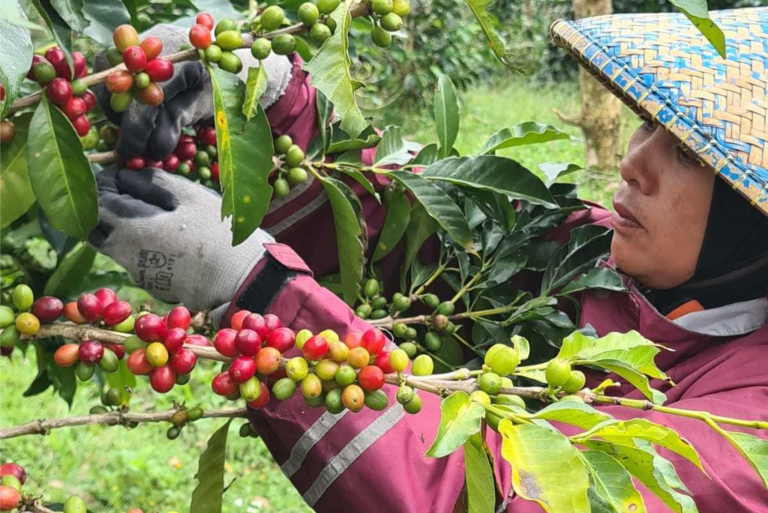
Frinsa Collective Edun #1
Frinsa coffee fermented by lactic acid with a complex but smooth character!
A coffee with a positive impact on Indonesia’s economy, environment, and social well-being.

Frinsa coffee fermented by lactic acid with a complex but smooth character!
A coffee with a positive impact on Indonesia’s economy, environment, and social well-being.
Although, the cup profile of Indonesian coffee has acquired a bad reputation among specialty roasters for its muddy and earthy tastes. We have a strong relationship with a producer in Java, Indonesia, as we see big opportunities to develop new cultivars and different processes.
Thus, it is a proud moment to announce that Frinsa Collective Edun #1 was one of the most popular coffees in September and that roasters ordered samples like crazy! It is encouraging to see that people are recognizing its potential as well.
This coffee comes from a family business, “Frinsa Estate”, which is breaking all the coffee rules and producing the cleanest and brightest washed Indonesians.
Besides the quality of the coffee, their work has a positive social and economic impact on the community. They are also promoting long-term water conservation and reforestation projects.
Hands down, this coffee earns its spot as coffee of the month.
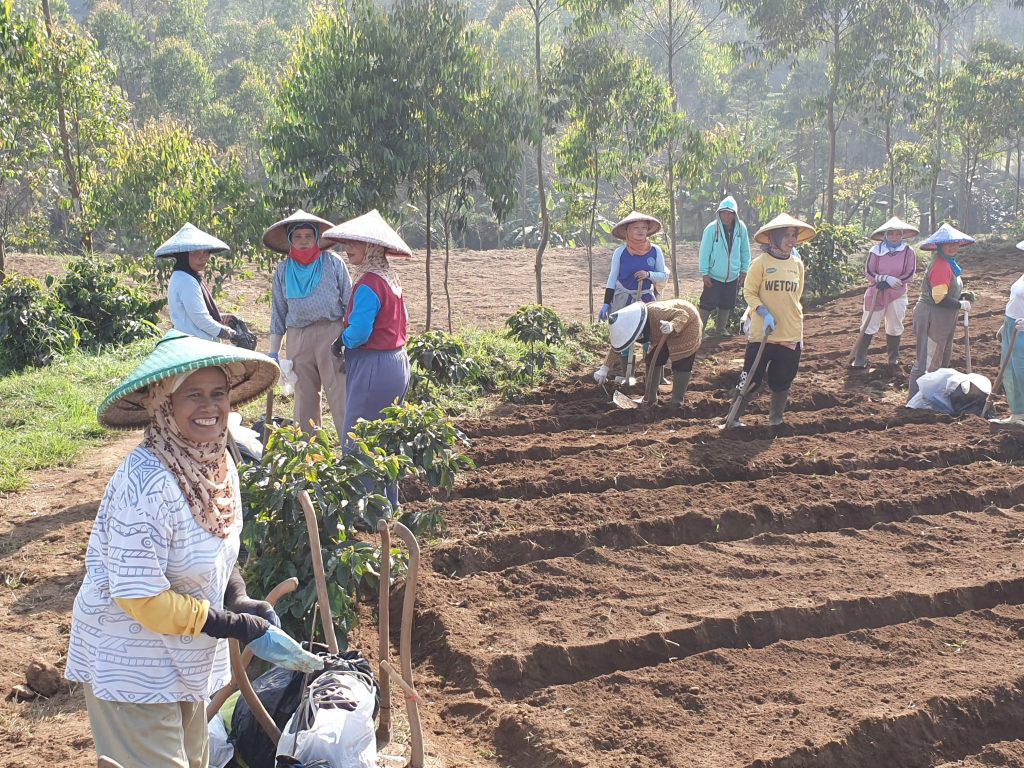
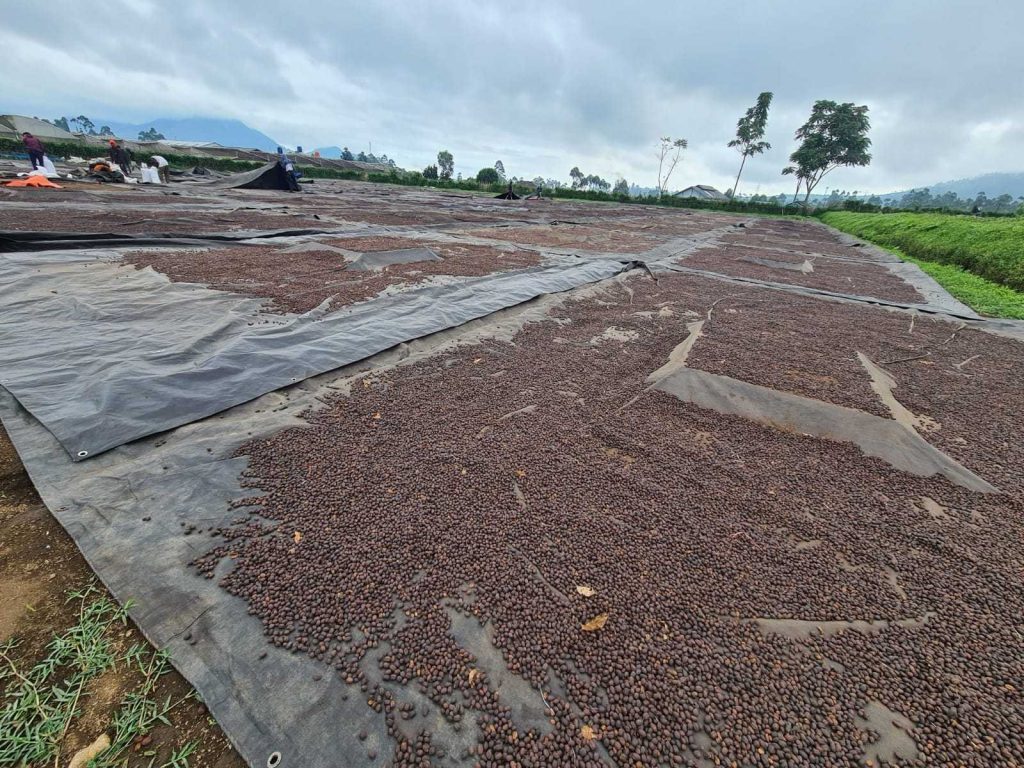
This 87-scoring coffee is funky and juicy. It is bright and layered, with a structured acetic acid.
It tastes like candy-like red fruit and dark chocolate.
Naming: To improve clarity among the origin and in honor of the country and its language, this coffee has been given the name Edun, which means “crazy” in Bahasa.
The varieties are Andungsari, Sigararutang, Lini S. Are you familiar with them?
After several years of experimentation, the family has narrowed down the processing methods to a select few that we know will produce great results.
These wild flavors can be loved by some, but hated by others. Tastes vary.
This is an Extended Fermentation Natural, one of those processes that’s sure to stir up debate – is there such a thing as too much funk?
You must get to know Jaime if you wish to learn more about fermentation.
Indonesia is a unique country that lies on the equator and spreads across 17,500 islands. It sits on the notorious Pacific Ring of Fire with the largest number of highly active volcanoes in the world.
They say coffee can be grown anywhere, but the best coffee is grown in high altitudes and rich volcanic soils.
Indonesia has a big bias against it due to the earthy/unclean profiles that still, for the most part, dominate the Indonesian cup profiles. Yet, if you look close, you will find clean and juicy coffees with a bunch of layers and intensity as Frinsa Collective Edun #1.
The cherry for this lot has been farmed by some selected outgrowers located in West Java, locally called Sunda. These farms sit at altitudes of 1300 – 1500 masl.
Normal spacing for these smallholders is about 2×2.5 meters. In practice, they will have 1000-1600 plants per hectare.
The average yield per plant is 2-8 kilograms of cherries, depending on the year and the farm’s practices.
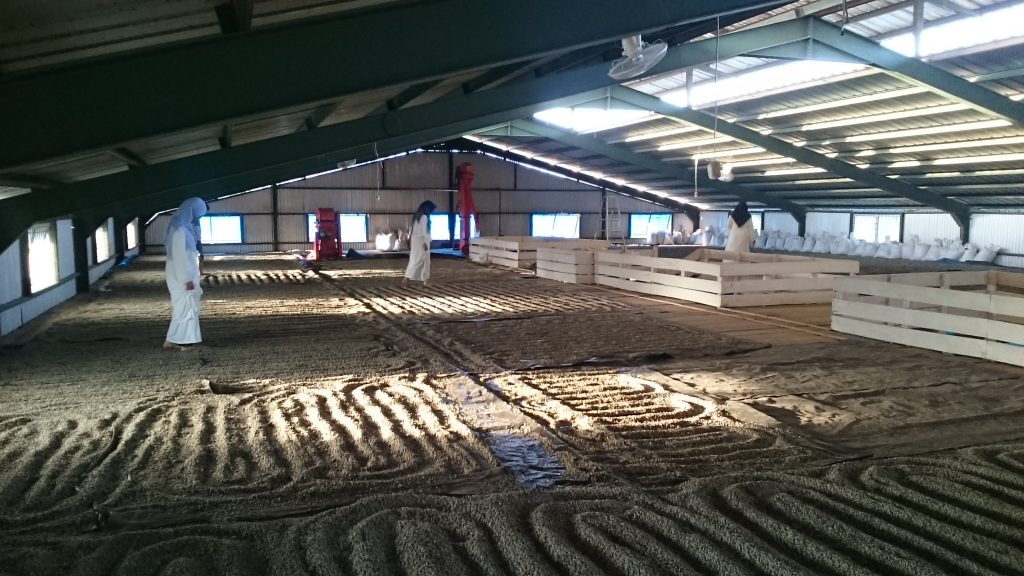
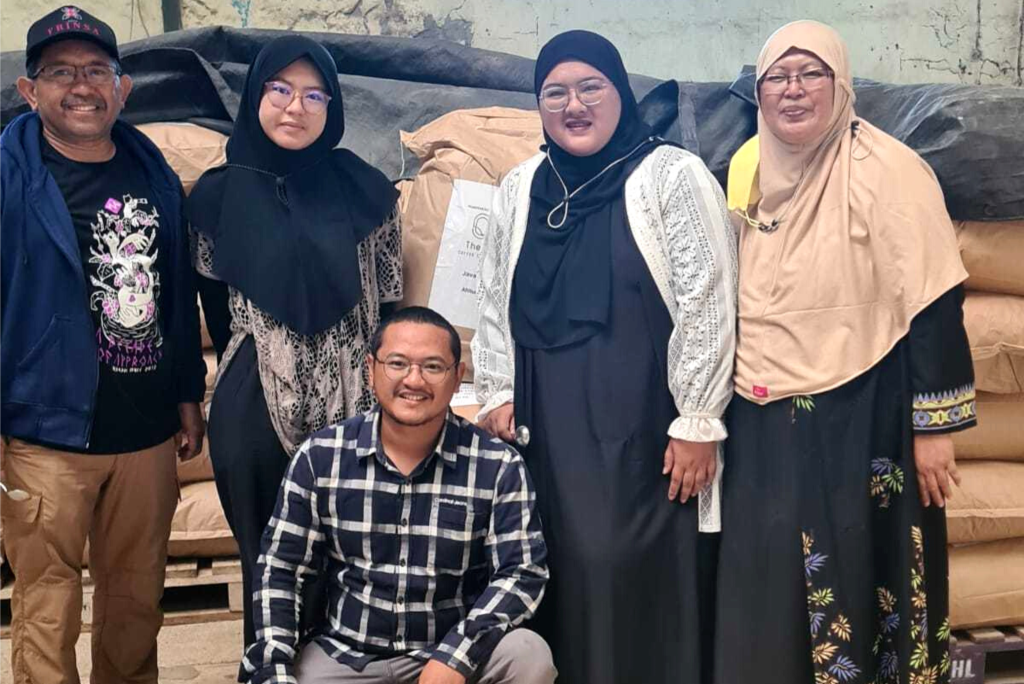
Frinsa Estate was founded by Wildan Mustofa, his wife Atieq Mustikaningtyas Wildan and their son Fikri in Bandung, south of Jakarta, on the island of Java.
In 2010, they started their first coffee project in Sindangkerta, Weninggalih area. This later became the main growing area at his farm, Java Frinsa Estate.
From the first year of production, Wildan has aimed to focus on quality, which requires attention and meticulous processes. While most Indonesian producers are making wet-hulled coffees, even for specialty, Wildan is focusing on fully washed.
They have a wet mill, a dry mill and a well ventilated storage space. All located at 1400 masl altitude. This means they are in full control of their product from harvesting, to grading, sorting and shipment.
Through a cooperation with the coffee research center, they have been planting a lot of different unknown cultivars. Recently, they replanted 40 hectares with Ateng Superand which has been officially released by the authorities. They also do a lot of reforestation with native species. Both, for shade and environment.
It’s generally hard to come across well processed, clean fully washed coffees that are properly dried in parchment. The majority of producers no longer do this, except for a few.
Until 1980 they were doing fully washed and dry hulled processing. The smallholders pulped, fermented and dried the coffee in parchment at the farms, and sold to local traders whenever they needed the money.
From the late 1980s, wet hulling was introduced as the traders needed volumes faster. This means that the smallholder pulp the coffee and ferment them in bags overnight. Then, they dry it for some hours or a day and then typically sell it as wet parchment to local middle-men. The middle man then dries it for around a day to reach about 36% moisture so the parchment cracks, and then they consider it ready for hulling (removing parchment) while still wet. Then it’s either dried again before it is sold to an exporter, or sold wet and dried by the exporter. Commercial coffees are generally exported at around 14% moisture.
Despite its fertile soils, Indonesia faces a large deforestation problem due to its high population density and rapid industrialization. Massive floods and landslides are common problems during the rainy season, where deforestation has left hilly areas vulnerable to erosion.
The government sees coffee farming as a smart solution to this problem. So, they have tried to encourage land use change from vegetable farming to coffee planting.
Wildan Mustofa sees this disaster phenomenon happen year after year in his neighborhood. The farmer always suffers the most. He found his calling to help other farmers, but his idea was not instantly accepted by the locals.
After a while, they began to learn and understand how growing coffee could help them to improve their livelihoods and ensure their household needs. They are slowly reuniting families who migrated due to the harsh conditions of life that existed before, when palm sugar production was the main source of living.
Additionally, Frinsa focuses on education. They donated a portion of their land in Mekarwangi village to build a high school for the community and other social projects.
They harvest from May to September, with the main harvest from June-August. The coffees are picked and then hand sorted for unripe and diseased cherries.
Their coffees are always separated in lots by field location, cultivar, and date of picking. The parchment are stored in plastic bags with LDPE liners.
Washed coffees are dry fermented in small tanks 15-18 hours before they are rinsed and soaked underwater for another 10-12 hours and washed under clean water.
They mainly dry on patio, but are investing in way more drying tables for the future. Currently, most of the coffees are pre dried on beds for a day or two in green houses and then transferred to the patio. Drying can take 14-20 days, depending on the rain during the drying period.
Wildan works with different fermentation techniques:
They do lactic fermentation using the lactobacillus culture. For the natural process, the cherries are washed to remove dirt and microbial contamination from the surface of the cherry skin, after cleaning, the lactobacillus culture is added to the cherries which are then put into plastic bags or plastic barrels and fermented anaerobically. The bags / barrels are rotated in the morning and evening and the gas is released, then the container is closed for 2 or 3 days. After fermentation, the cherries are dried on raised beds.
They also have a fermentation technique with Saccharomyces cerevisiae which is used in natural and honey processing.
Both of these fermentation techniques can be done together. For example, natural coffee can first be fermented lactically, then dried in the sun, then fermented again with saccharomyces then dried again until dry.
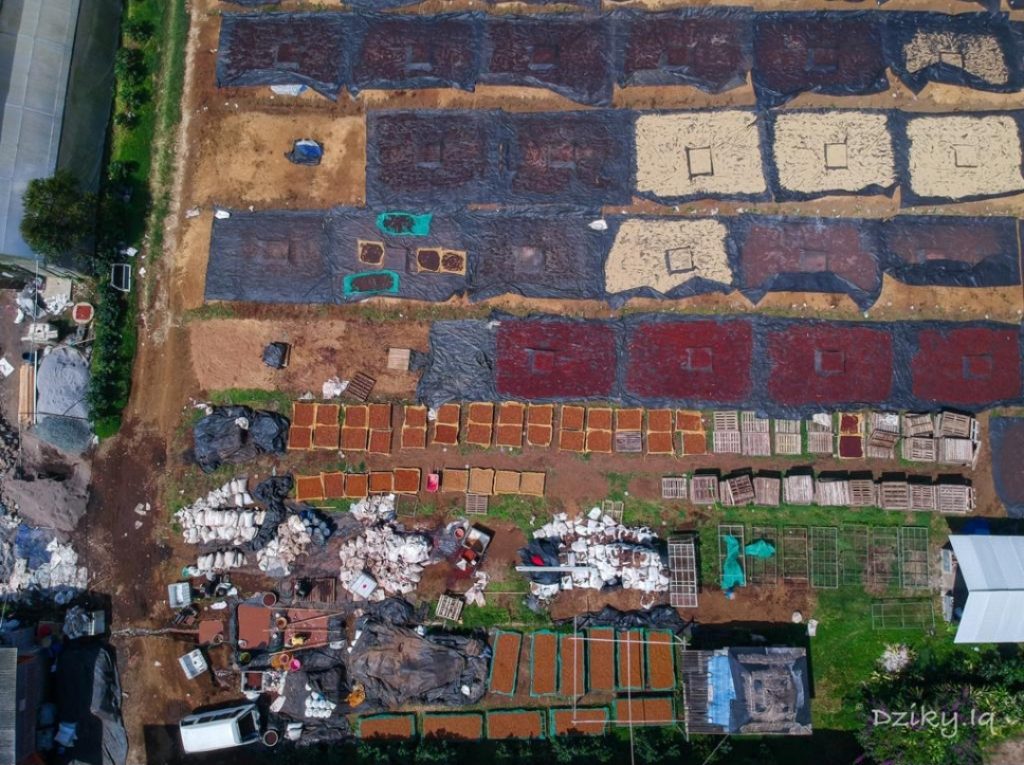
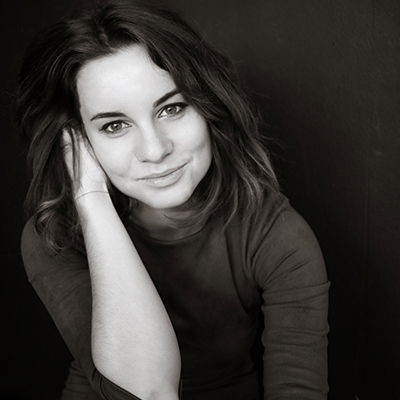
Send us a comment with your opinion of Frinsa Collective Edun #1, and we will add it to the testimonials.
The experience of cupping coffee has just turned into an exhibition!
| Cookie | Duration | Description |
|---|---|---|
| cookielawinfo-checkbox-analytics | 11 months | This cookie is set by GDPR Cookie Consent plugin. The cookie is used to store the user consent for the cookies in the category "Analytics". |
| cookielawinfo-checkbox-functional | 11 months | The cookie is set by GDPR cookie consent to record the user consent for the cookies in the category "Functional". |
| cookielawinfo-checkbox-necessary | 11 months | This cookie is set by GDPR Cookie Consent plugin. The cookies is used to store the user consent for the cookies in the category "Necessary". |
| cookielawinfo-checkbox-others | 11 months | This cookie is set by GDPR Cookie Consent plugin. The cookie is used to store the user consent for the cookies in the category "Other. |
| cookielawinfo-checkbox-performance | 11 months | This cookie is set by GDPR Cookie Consent plugin. The cookie is used to store the user consent for the cookies in the category "Performance". |
| viewed_cookie_policy | 11 months | The cookie is set by the GDPR Cookie Consent plugin and is used to store whether or not user has consented to the use of cookies. It does not store any personal data. |